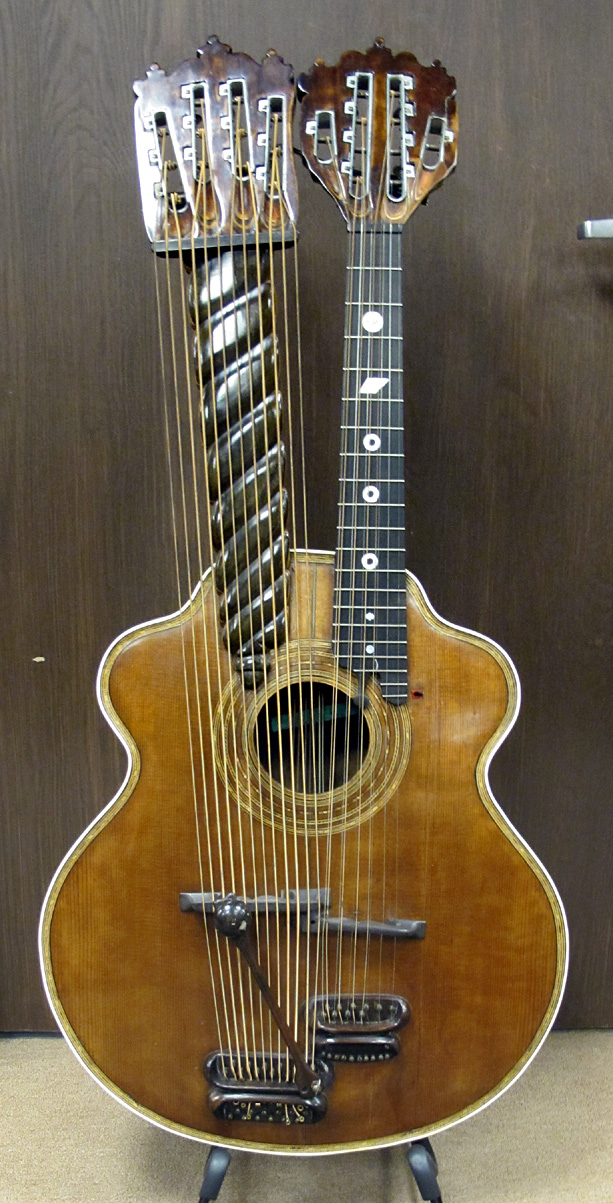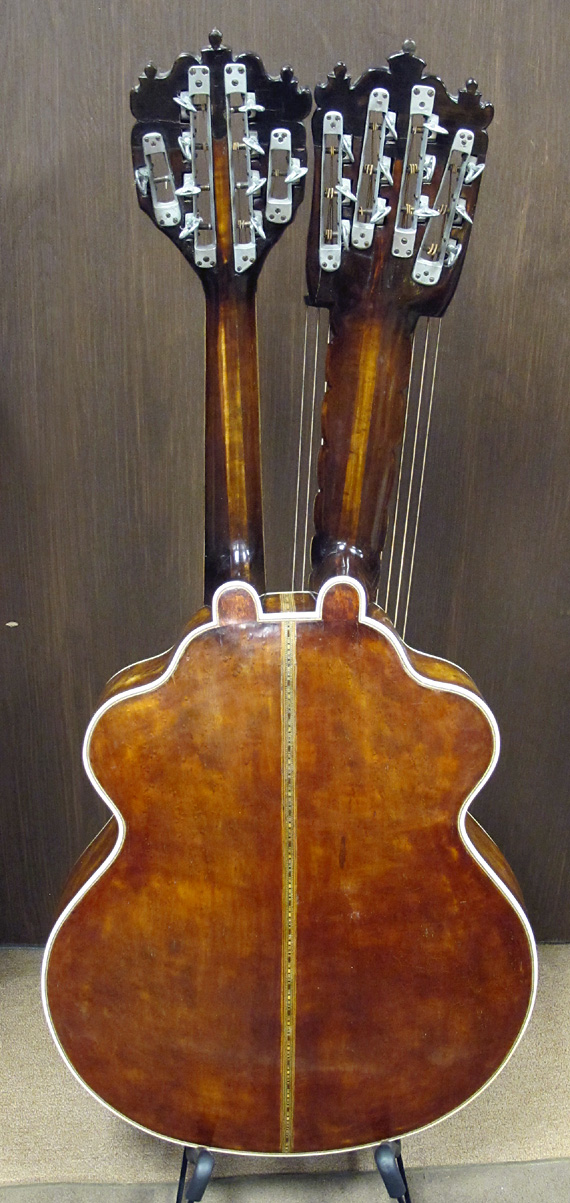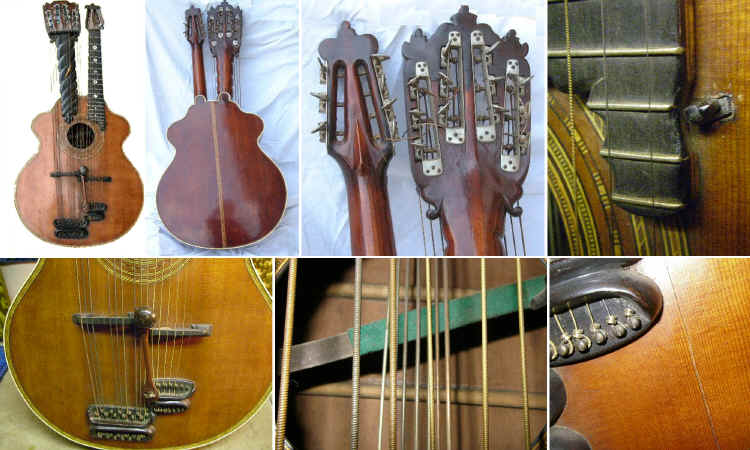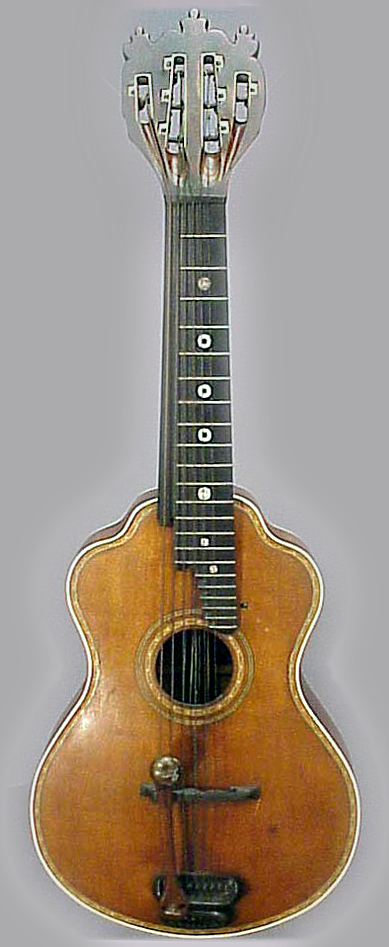|
Scott Chinery wrote of this guitar, "I often think it
looks almost like a Gothic torture device." I have to agree!
And yet, there is a very thorough logic to Mr. Bohmann's ultimate
creation - in fact, nearly every feature was important enough that he
patented it.
Bohmann had earlier patents (including a strange hand rest for
bowlback mandolins in 1889), but the first one to concern us is # 1,128,217.
Applied for on Oct 28, 1911, it wasn't granted until 3-1/2 years later, on
Feb 9, 1915. The two key "improvements" it offered were a set of
sympathetic "strings" inside the body, and a bulging convex top
and back.
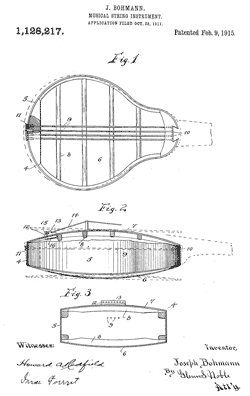
1,128,217b
1,128,217c
For the former, Bohmann attached
thin metal rods inside the instrument from the neck block to the end block. These
were then tuned, via wing nuts, to specific pitches, in order to vibrate in sympathy when played.
He
even figured out the best materials
to use - copper for G, brass for D, steel for C, and German silver for
F. Has anyone ever heard of this "musical metal matching"?! There was also a damper pad which could be locked into place or left
free by depressing a button next to the fingerboard. Four of these were
specified in the patent, but up to seven were used in the harp
guitars. You can count the seven rods through the soundhole of
Chinery's instrument below, and also see the damper pad, with the
activating button coming through the top to the right of the fingerboard
(with red felt border). Chinery said in his book that he heard little difference
between the damper On and Off positions - it seems like a lot of
work for such negligible effect!
I was able to finally test the metal tone rods for
myself in 2018. As Chinery said, there was little difference whether the
damper bar was engaged or not...that's because there was virtually zero
additional volume or vibration from this alleged magical reverb effect.
The rods were mostly stiff, but perhaps needed tightening and tuning to
the specific Bohmann pitches. I just can't see Bohmann spending so much
time on this unless at one time he did hear something!
The second part of the patent addressed the new construction: side walls
which were 1/4" thick, with the top and back assembled last,
bent under extreme tension.
Both concepts were to be applied to "A-shape" mandolins, guitars and "harps" (harp guitars).
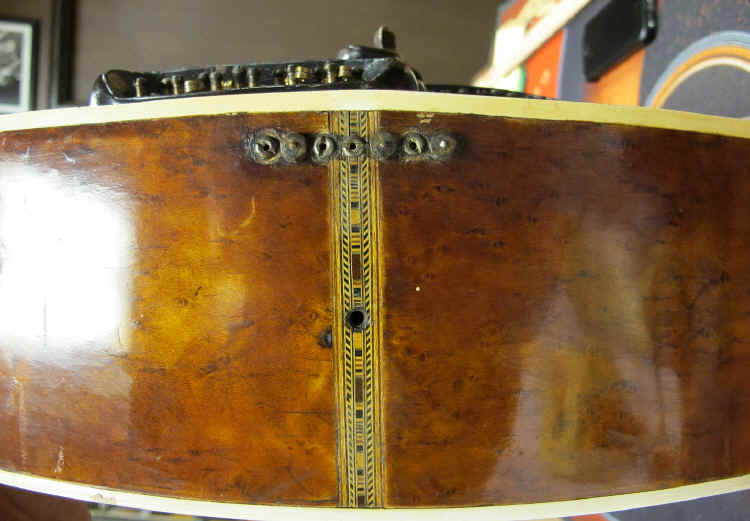
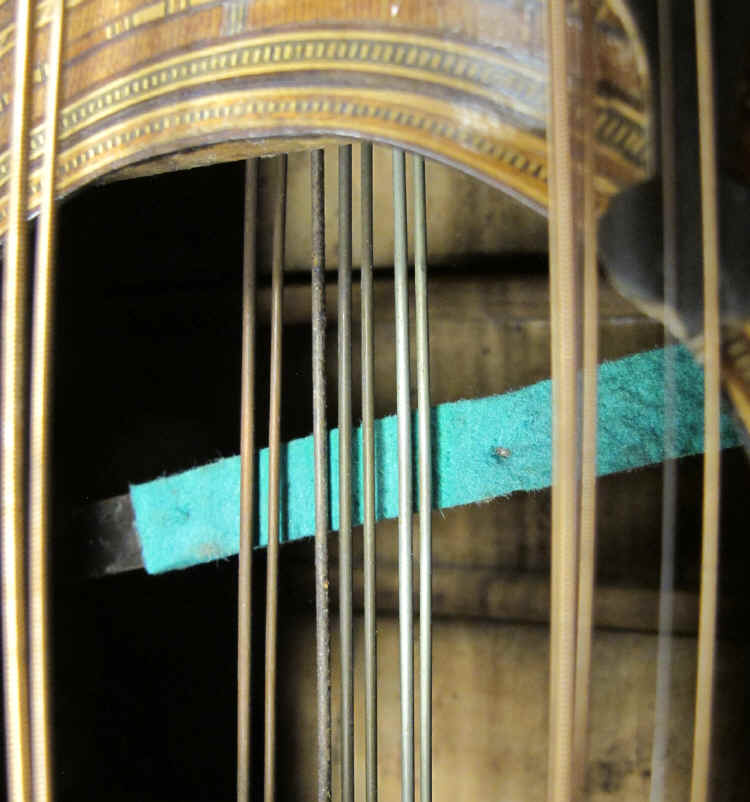
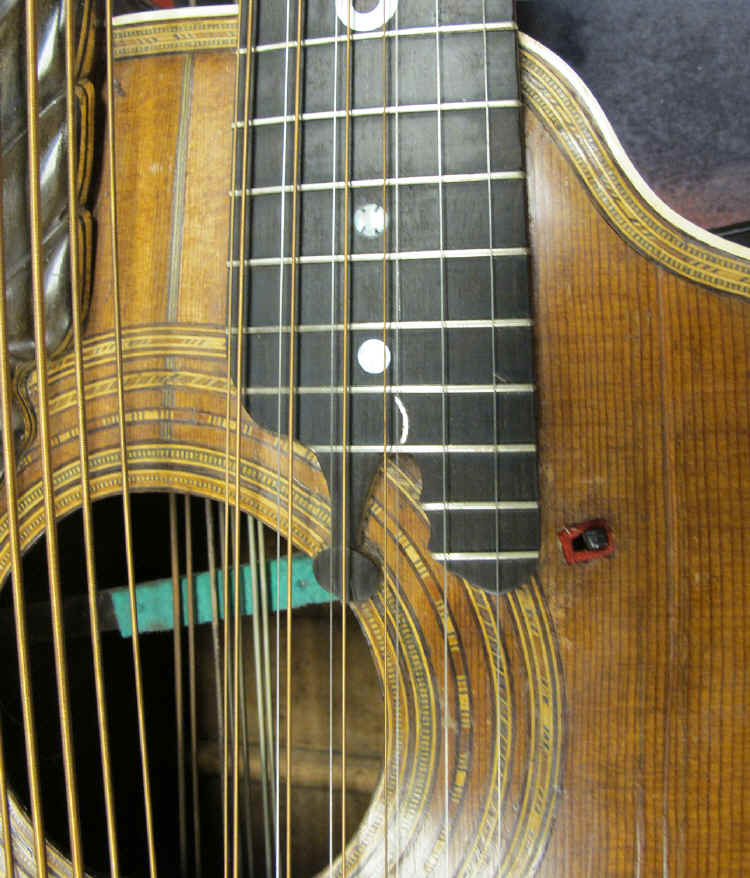
On
March 9 of 1914, Bohmann applied for a patent on his new hand rest,
tailpiece and
bridge combination. For reasons unknown, this was never granted, but the
elements were incorporated into the next patent he submitted just
four and a half months later on July 27.
This was granted two years later on April 18, 1916.
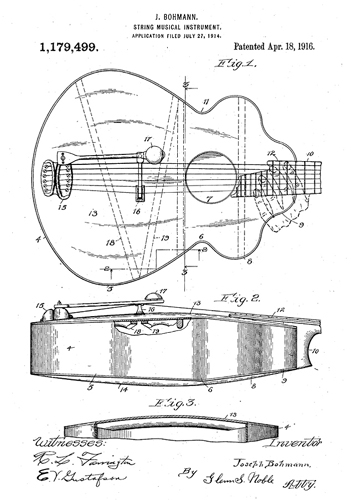
1,179,499b
1,179,499c
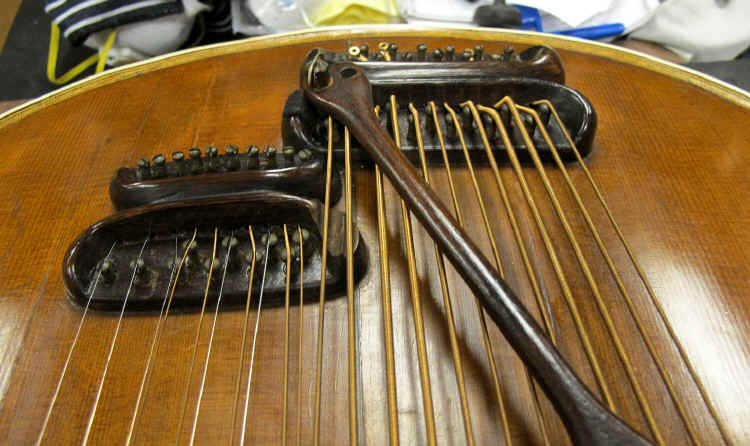
You
can see it in the patent and the other known harp guitars below that all
have the exact same device. Frank Ford mentioned how fragile
the one he inspected looked, doubting that it could have been used as a
hand rest - yet, amazingly, these wooden attachments are still intact on
all three harp guitars!
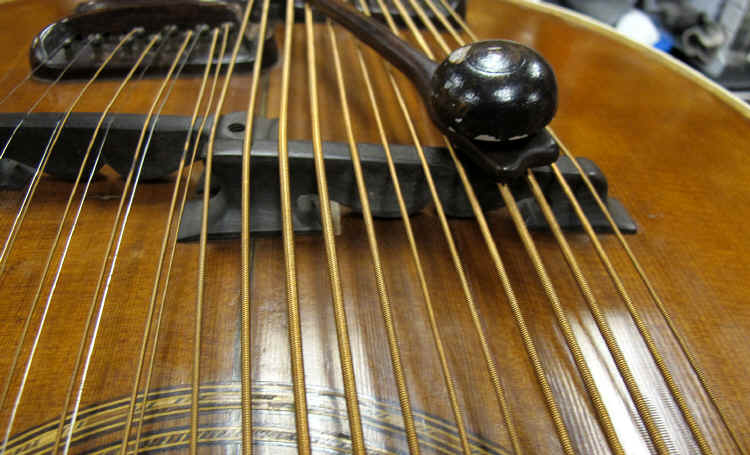
Bohmann
mentioned a "patent machine bridge" in his 1890s catalog.
We haven’t been able to locate a patent, so it was likely never
granted. We assume it was in reference to the configuration seen on his
c.1890-1900s harp guitars, especially the “Contra Bass” instruments
(below). Note that its "saddle" is incorporated into the
carving, with the neck replaced with bone.
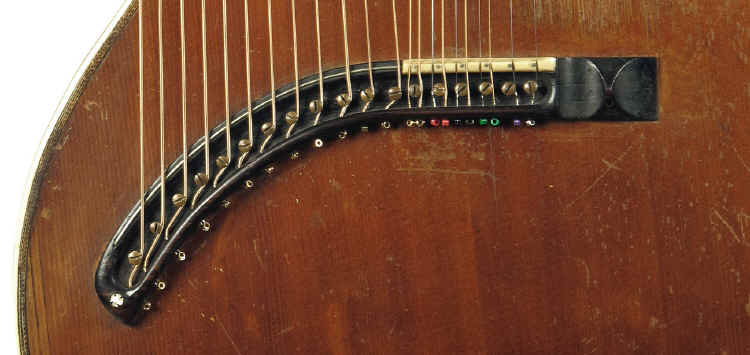

However,
these
later ‘teens instruments feature something similar but much more
complex, as they are well separated with the tailpiece section doubled
up in an overly-elaborate single mirror-image carving. The top set of screws
in the double-tailpiece (here, two double-tailpieces, as it is a harp
guitar!) serve as
"guideposts," the strings then going underneath through holes
into the second tailpiece section. Another set of screws here are used to
attach the loop-end strings. Note that both the hand rest and the new
tailpiece/bridge array appear clearly in the patent.

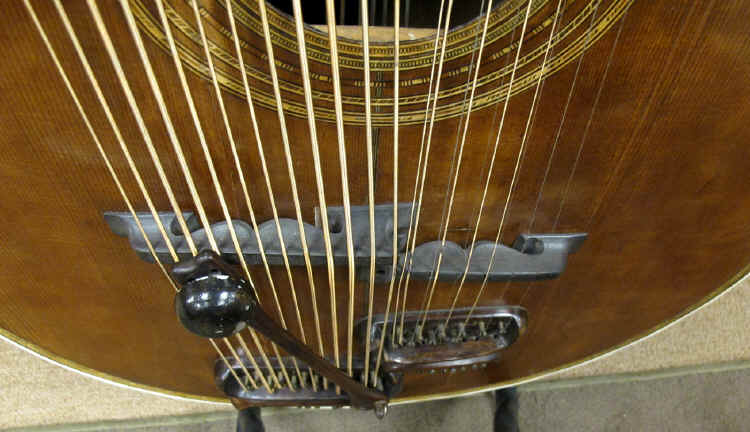
Bohmann was quite clever
to include these features even if we was denied the chance to include
detailed descriptions. Instead, he is forced to write “…the tail
piece and bridge may be made in any desired form…” while sneaking in
“…I prefer to have them constructed in the manner shown in my
previous application for musical instrument, filed March 9, 1914…more
particularly in order to support the hand rest or guide, such as also
shown in said application.” In other words, he seemed to be covering
his bases, in the event that the earlier patent was denied (which it
was)!
The
patent illustration clearly shows the strings being guided under the
head of the screws on the bass side, going through holes in each
tailpiece and attaching (presumably via loop ends) to the second set of
screws.
Note
above that the instrument is now strung with ball-end strings (as
historical loop-end strings of these gauges are no longer made). The
main neck's string balls butt up against their top tailpiece lip, with
the anchor screws unused, while the sub-bass strings are jammed in
whichever way they can fit! (These are randomly gauged and strung and
not yet in the intended chromatic tuning.) On both string banks, the
strings are here resting in the slot of the screws, rather than tucked
underneath. Though
Chinery originally only strung the neck with six strings, this is
actually a 10-string, 6-course instrument, with the low four courses
doubled. It is now fully strung, in the manner of the well-known late
1890s Grunewald.
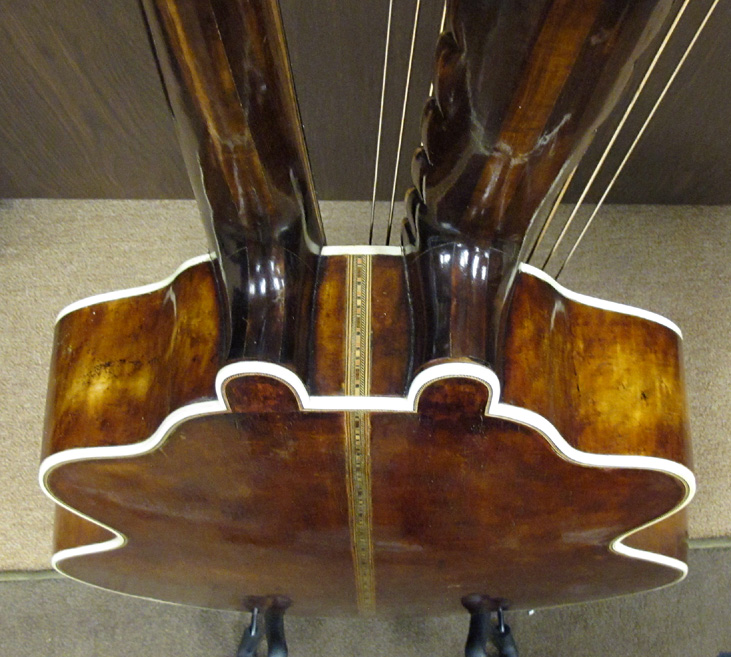
Other
than his mention of the separately-applied-for bridge design and hand
rest, this patent presented two new features. The first was the obvious
new body shape (the convex shape already established in his earlier
patent) – with a strange upper bout intended to make it easier to
access the higher frets (conveniently shown with the illustration of an
added invisible hand!).
The
second feature was a specific new layout of the top braces (shown in the
patent illustration).

Not mentioned in any patent (that we can find) are the
bizarre tuners in an even stranger headstock design that helps bring to
mind the "torture device."

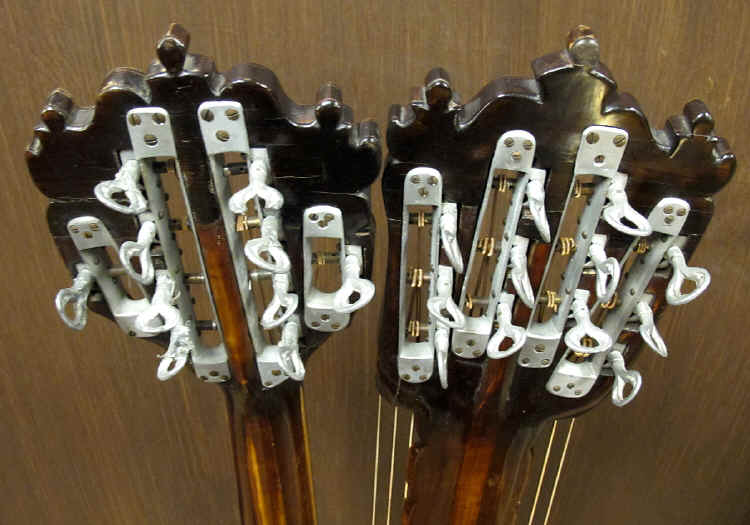
Yes, those are Bohmann's
custom-fabricated pot metal tuning keys and hardware.
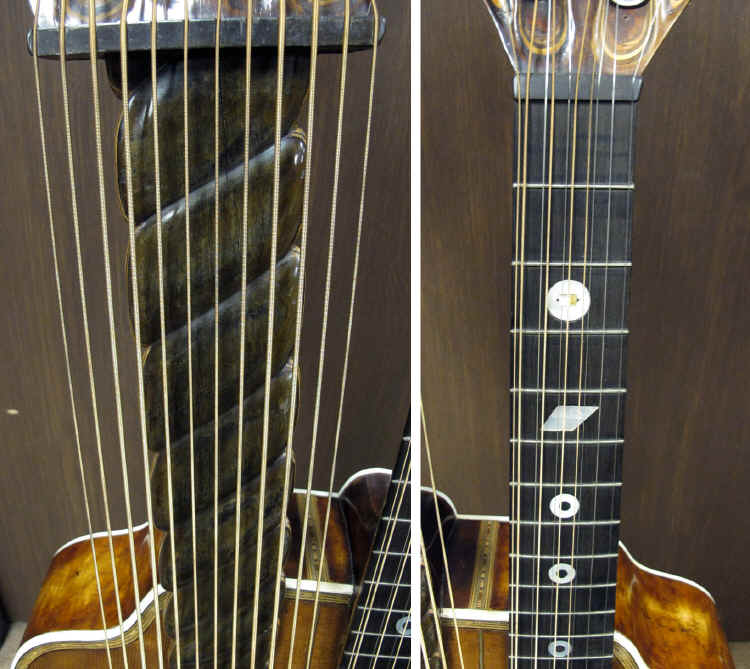
The carved "flattened scroll"
is extremely eye-catching, and then there are of course Bohmann's infamous
oversize and blunt fretboard inlays.
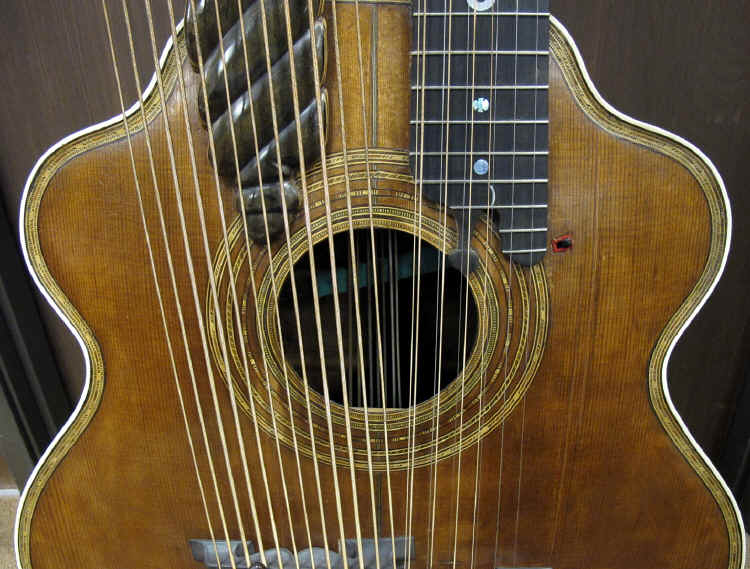
Note the raised lip of the sides over
the top. This violin-style embellishment is another striking late-period
Bohmann feature.
|

